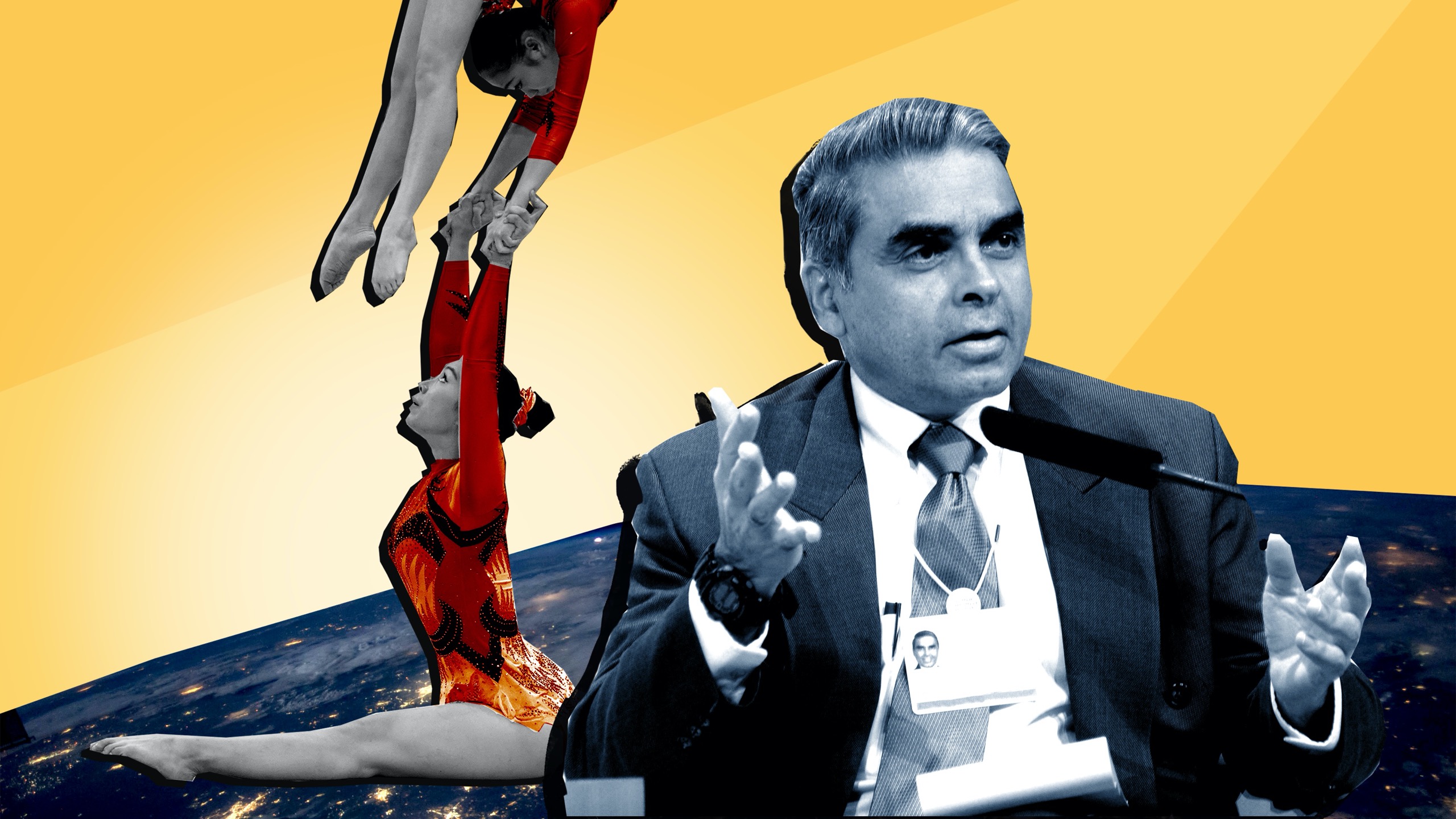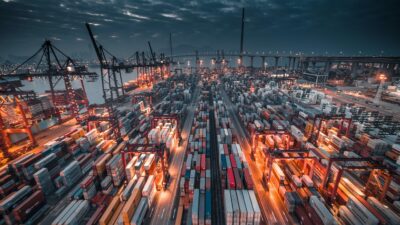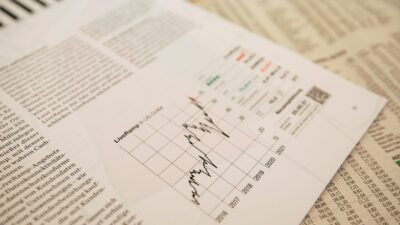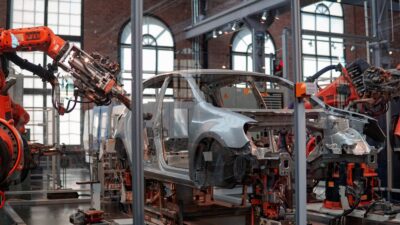Sydney Business Insights

Revisiting the Asian century with Kishore Mahbubani
This week: we revisit our 2020 discussion with Singaporean diplomat, academic and author, Kishore Mahbubani.
Sandra Peter (Sydney Business Insights) and Kai Riemer (Digital Futures Research Group) meet once a week to put their own spin on news that is impacting the future of business in The Future, This Week.
Shownotes
Our previous discussion with Marc Stears on the future of geopolitics
Kishore Mahbubani at the Asia Research Institute
Kishore Mahbubani’s insight on China’s path from pandemic to economic powerhouse
Our podcast on China’s post-pandemic economic recovery
Kishore Mahbubani’s latest book, Has China Won?
Kishore Mahbubani’s earlier books, Has the West Lost It?, The ASEAN Miracle and Can Asians Think?
Francis Fukuyama’s essay, The End of History?
Amartya Sen’s paper on Adam Smith and the invisible hand
Graham Allison’s book, Destined for War
Xi Jinping’s 2017 keynote speech at the World Economic Forum
Richard Horton’s Lancet article on the US defunding the WHO
Follow the show on Apple Podcasts, Spotify, Overcast, Google Podcasts, Pocket Casts or wherever you get your podcasts. You can follow Sydney Business Insights on Flipboard, LinkedIn, Twitter and WeChat to keep updated with our latest insights.
Send us your news ideas to sbi@sydney.edu.au.
Music by Cinephonix.
Sydney Business Insights is a University of Sydney Business School initiative aiming to provide the business community and public, including our students, alumni and partners with a deeper understanding of major issues and trends around the future of business.
Share
We believe in open and honest access to knowledge. We use a Creative Commons Attribution NoDerivatives licence for our articles and podcasts, so you can republish them for free, online or in print.
Transcript
Disclaimer We'd like to advise that the following program may contain real news, occasional philosophy, and ideas that may offend some listeners.
Sandra Where is our lunch?
Kai I don't know.
Sandra UberEATS is taking forever.
Kai Maybe they should have used a drone. Or maybe they did.
Sandra Yeah, we're gonna talk about drones in a minute. But since it's close to lunch, which should talk about food stuff first.
Kai Okay, let's do this.
Intro From The University of Sydney Business School, this is Sydney Business Insights, an initiative that explores the future of business. And you're listening to The Future, This Week, where Sandra Peter and Kai Riemer sit down every week to rethink trends in technology and business.
Sandra Do you think we keep talking about food stories because, you know, it's so close to lunch, and we don't have any?
Kai Maybe, maybe. No there were actually some interesting food stories that we should mention. There's one in Slate, apparently the FDA, the Food and Drug Administration in the US is going after oat milk and soy milk and basically milk replacement product. Apparently, they're about to come down with a decision that pretty much follows the Milk Lobby's recommendation to prevent producers of milk-alternatives from using the label milk.
Sandra So that's things like almond milk, and soy milk and rice milk, right? So you wouldn't be able to call them milk anymore? What are we calling them?
Kai Well, that left open, probably juice or something else, but not milk. What is interesting here is the reasoning and the Slate article takes the FDA to court because if you read the reasoning, then apparently not knowing that these replacement products are just juices and not milk is the basis for a nutritional crisis. The reason is that people seem confused. And so they go to the shop, and, by mistake, they buy almond milk, which has much lower protein contents about an eighth of the protein contents of cow's milk. And that is bad for the children and consumers more generally. And so consumers have to be protected from this misguided advertising.
Sandra And equally, milk producers have to be protected by the fact that almond milk and oat milk and soy milk have taken a significant market share.
Kai And I think that's what we're talking about here. Those innovations in this market are gaining popularity with consumers, more and more people use this for their cereals, but especially for their coffees. A typical coffee shop now you have the choice between almond, oat and soy milk and sometimes other milk alternatives. And so this is a lobby just fighting back trying to protect its market share.
Sandra But this story is actually really interesting. There has been this milk war going on for at least five years now, I remember we did the story back in 2017, where there was this big controversy, what can you call milk? And the dairy industry's position has always been well, it's only animal milk that can be called milk. But if you think historically, that wasn't always the case, right? There was specific descriptions of the milk had to be raw. So anything that we sell now as milk, pasteurised milk wasn't milk. It's always the people who bring in the innovation who then have to prove that what they're selling now can be classified as the umbrella term we used to have beforehand.
Kai Yeah, exactly. And you can't even sell raw milk to consumers in Australia. So what the cow actually gives is outlawed because it's supposedly, unhygienic. So the normal category milk is actually industrialised milk.
Sandra And its history all over again, right? Because we've had the same controversy with margarine and butter. Back in the day where people who made margarine had to basically make it clear that it is not butter. 'I can't believe it's not butter' had to pay an extra premium if they put I think it was dyes, like yellow dyes, to make it look like butter. Basically the same thing again.
Kai And so the Slate article points out that the FDA should really focus on more pressing food related issues. There is an actual nutritional crisis in the US in Western societies, and it's not the lack of protein from not drinking enough milk.
Sandra But there were more food stories this week. Ramen is about to get extremely expensive, so we're likely not having noodles for lunch for much longer.
Kai And what why is that? Is it because it's too popular? Because it is very popular here in Australia,
Sandra Not only in Australia, but think about China, South Korea, Japan, it's just basically
Kai A staple.
Sandra A staple. Yep. Cost of wheat is what's happening.
Kai Oh. Okay.
Sandra Cost of wheat, war in Ukraine, but also floods in the past few years. But also droughts in the past few years...
Kai And shipping crisis.
Sandra And shipping crisis. Have seen the prices in China alone go up by 30% And then, as we've said this as a staple, cheap, accessible food that is increasingly under threat. There is also likely no end in sight to this crisis. The war in Ukraine is not showing any signs of easing up. And that's not just affecting the supplies of grain but also the supply of fertiliser. And that's not only from Ukraine, but also from places like Russia and Belarus. There's all the logistical the supply chain problems that the Coronavirus has accelerated and that continue to persist. And there's of course still the droughts and the extreme weather events that we've seen everywhere around the world including in places like India, affecting the global grain supply and the prices.
Kai But droughts are not only affecting wheat supply around the world, there's other food groups where this has come to a head and one of it is hot sauce, apparently,
Sandra Hot sauce. There's a coming Siracha shortage (and not just). The ongoing chilli pepper shortage is making it really difficult for producers of hot sauce to keep going. And you know, that's many of the brands that you recognise, Siracha, all the chilli garlic sauces, all the sambal oelek sauces. Companies like Huy Fong that produce millions of bottles of hot sauce a year are reporting really, really severe crisis because the chilli peppers that are normally sourced from places like Mexico or California or New Mexico have all experienced very severe droughts, and hence have impacted the supply. So these companies are unable to source the chilies to make the sauce.
Kai And I think we're going to see more and more of these issues around supply shortages and resource security with manmade climate change progressing. And that is actually one of the Business School megatrends, right where quite deliberately, the two, climate change and resource security, are put together. And I think the future of business will be very much impacted by shifts in climate and by producers having to look for new places to grow certain crops, but also by unforeseeable disruptions to certain food groups, which will put lots of strain on the resilience of supply chains, but also on business who have to cope with this.
Sandra And also people, like let's remember that these megatrends don't impact people around the world equally, because while the two of us might not get to have our spicy rolls for lunch, or you know, the price of our udon soup might go up by 10%. In other parts of the world, these are staple parts of people's diets. And increasing 10/20/30% In this is dramatic. And the World Economic Forum has highlighted again and again that food security for large parts of the world will be increasingly under threat because of the problems that we've just outlined.
Kai So there's the resource implications from droughts and climate change, but there's also still supply chain disruptions. Not just because of wars, but also the after effects of the pandemic, which impact businesses still, and it has, in the last week, taken a major casualty in the form of Revlon. The cosmetic giant in business for 90 years, has filed for bankruptcy in the last week.
Sandra So Revlon is a huge company with a very significant history. 90 years it's been around, its present obviously in everything from, you know, lipstick to nail polish to hair colour, you name it. And during its kind of heyday Revlon was probably one of the best-selling brands in the world, backed by celebrities, instantly recognisable everywhere, and it has now filed for bankruptcy.
Kai Revlon had been in trouble before this latest shipping crisis. For years now new celebrity-backed brands have gained ground, bigger companies like L’Oréal have upped their marketing strategies, social media influencers have shifted the market. And so it's been losing market share for quite a while. It was also caught out by the COVID crisis, much like other brands, but suffered quite severely because people just didn't buy cosmetic products during the pandemic. And the latest shipping crisis has impacted many of its products. For example, a typical lipstick apparently has 35 to 40 essential ingredients, that without them cannot be produced, and some of them were impacted by that shipping crisis. So to the point that it had to file for protection under Chapter 11 to continue operating, but at a much-decimated share price and also with the need now to cut costs quite severely.
Sandra Remains to be seen what happens to Revlon, but I'm really keen to talk about drones because you know, there's another pilot going on. And I think we should talk about drones again. Amazon is set to begin drone deliveries in California this year. Again.
Kai Again, because Amazon has a long history of announcing drone deliveries.
Sandra And not just Amazon, right, in Australia, we had Australia Post testing drones for parcel delivery. And that was, you know, five, six years ago.
Kai Well, Jeff Bezos announced drone deliveries first in 2013. And in the wake of this latest Amazon pilot in California, it has been pointed out that so far Amazon has made exactly one drone delivery that was publicised and discussed at length, and that was in 2016 in Cambridge, UK. Where a major operation of its Prime Air service was located. Lots of research went into researching drone deliveries, but that unit got scrapped in 2021, to very little fanfare, and with very little to show for, but there seems to be a reboot now in California.
Sandra So drone deliveries are back. And there have been a slew of drone delivery related articles in the New York Times, on the BBC, in The Washington Post, in The Guardian.
Kai Yeah, drones seem to be a thing without actually being a thing because we're still waiting for our first drone delivery here. We've discussed this on the podcast before. But Megan, our editor still hasn't received her burrito...
Megan Where's my burrito?
Kai That was promised, all the way back in...
Megan 2017!
Kai 2017. Yes.
Sandra And what did we say in 2017, Megan?
Megan Ummm, stop droning on about it?
Kai Stop droning on about it, ha!
Sandra No you can put the clip from back then.
Megan Oh, the clip. Sure.
Audio - Kai We have these great use cases, we have these great demonstrations. Drones can do all these things. But how do we actually scale this? How do we make this part of the everyday lives of people in business? So all of these things are emerging much more slowly than the development of the actual technology.
Sandra So five years ago we had this entire conversation about how there's some good use cases, and there's some really interesting things that are happening, in particular deliveries of medical supplies and of critical blood supplies or vaccines. And then there's all this promise for drone delivery. But it's not quite here yet. So it's five years on now. Let's have another look at drones. And in particular drone deliveries right, we should stay away for now from applications for military purposes or for entertainment, like the VIVID display that we saw last week with 600 perfectly choreographed drones over Sydney Harbour.
Kai A few of them fell out of the sky, which was quite funny, actually.
Sandra But it was still the largest drone show in the southern hemisphere courtesy of Paramount Plus.
Kai So why does it take so long to take drones from, you know, small scale studies to full scale application?
Sandra Why are they not here yet?
Kai Why are they not here?
Sandra And when they coming?
Kai And when are they coming? Yeah. So first of all, they are already here in some areas for some use cases.
Sandra You're right. There's been some amazing instances of drone deliveries with vital, like, medicine or supplies for remote or vulnerable populations. We've seen this with vaccines in places like Papua New Guinea and Liberia. We've seen it with similar initiatives during COVID-19 for vaccines and medicines in remote parts of India. And companies like Zipline using drones to deliver like blood and medical supplies in parts of Rwanda and Ghana, where getting there by land is extremely difficult.
Kai But when it comes to using drones to do the last mile delivery of e-commerce orders to consumers, what we've seen so far is very small-scale studies, very small-scale applications. Some ice creams have been delivered. Some pizzas have been delivered. But the grand scale application, like promised by Amazon, is still far from being ready for prime time, right?
Sandra You're right, we've seen you know, Blue Bell Creameries deliver ice cream in the US. We've seen promising trials in places like Shenzhen, where you could order food and the food would be delivered to you by drone in a cardboard box. But then we fail to see any large-scale application whether it's Australia Post here in Australia ramping up its deliveries, or whether it's Amazon, or even in places like China, using drone delivery, for instance, during the Shanghai lockdown. So what's going on? Why are they not here yet?
Kai It's actually a hard problem to solve because it's not just the technology, that can be an issue outside of the lab. It's also economics. It's the logistics of it, it's regulation, and it's also potentially the social acceptance by consumers who are, you know, the recipients of drone deliveries.
Sandra Okay, let's start with the first one. The technology. Why is it so hard?
Kai For the same reason that it is hard to get AVs, autonomous vehicles, onto our roads, because the world is messy and having a drone take off from a facility and fly to where it needs to be, is kind of okay. But then that last bit of actually delivering, knowing where exactly to drop the parcel, not hitting anything, not getting stuck in wires and fences and trees, is actually quite hard under normal circumstances.
Sandra Yeah, wires, birds, fences, trees, GPS reception in the city, all these things that make it a much harder problem to solve in a city than it is under lab conditions. Which is why most of the successful applications of drone deliveries are in remote areas, or in places where a lot of these complications just go away.
Kai Yeah, and also approaching a free-standing house in the suburbs, dropping a parcel in the front yard is presumably reasonably straightforward, but it still has the problem of the weather for example. The postman can put the parcel close to the door on the cover, a drone would have to drop it in a clear patch of grass, which means the parcel is exposed to the weather. Most drones also have to drop from a certain height, because of the potential interference with small children and pets and things on the ground, which also limits what you can transport. Or, like Amazon has trialled in the UK, you have to build much bigger sturdy or drones that are harder to fly, increase the risk of injury and might also fall under different regulation because they're bigger drones.
Sandra And there's also the fact that there are some people who just do not want them around. There's communities that are resisting it on account of noise, on account of privacy. This thing has cameras and collects data all the time, or just on account of 'I do not want them near my house'. The Washington Post is reporting on vigilantes...
Kai In the Californian town of Rockford where Amazon is planning to trail this with the 4000 local residents. Some have already come forward and said you know, 'not in my backyard, should I see one I will shoot it'.
Sandra Which reminds me of one of our favourite, favourite stories. And Megan can find that clip, also from about five years ago.
Audio - Kai Oh, this brings me to one of my favourite stories.
Audio - Sandra One of our favourite stories.
Audio - Kai Birds of prey, being trained to take drones out of the skies as a counter measure to espionage.
Audio - Sandra In the south of France, the French are training golden eagles to spot drones and perform mid-air takedowns of rogue drones.
Audio - Kai And we have some sound for you here.
Audio AUDIO OF EAGLES ATTACKING DRONES
Sandra So these people could be training eagles instead.
Kai Or use it for archery practice.
Sandra So the tech and the social bit is hard. But then so is regulation. And while in some places, like the US, the regulatory space is being ironed out, like for instance, Amazon drones should be able to eventually fly beyond line of sight, which means that they wouldn't have to keep an eye on it all the time.
Kai Which severely limits the range of use.
Sandra There are still significant regulatory hurdles, even in places like Australia, but in particular in places like Europe, which have to do not only with its ability to fly without supervision, but also relating to the type of data it can collect.
Kai Or indeed, where it can fly. For example, in places like Australia, the flight path goes over large parts of the city, which would be inaccessible to drone delivery. I mean, setting aside the fact that drones are no good delivering to high rises anyway, because you can't put the parcel into the hallway, you cannot fly into a balcony, it severely limits the range in which these could be used.
Sandra But technology, social aspects, and regulation aside, there's still the pressing issue of the economics of it.
Kai Does it actually make sense? Is it actually cost efficient to do this?
Sandra And this is an issue that a number of the articles that we've seen this week, including Shira Ovide's piece in the New York Times, have raised does it economically make sense? And there's a number of considerations here first, what's the competition right the Australia Post truck with a person delivering the package, or in the US the UPS person delivering a package.
Kai Delivering many packages a whole van-full that can go from place to place. Whereas drones can only do hub to spoke delivery, always have to go back to the warehouse to load another package. There are very few drones that could potentially, you know, pack two or three packages, and they are largely in trial status.
Sandra And as I was leaving this morning, the Australia Post guy was dropping about 10-15 packages in our hallway. The biggest drones today used for commercial deliveries, and I think there was an article that mentioned Wingcopter, a German aircraft developer, can carry at most three packages.
Kai And the larger the drone, the more restrictions on where it can actually fly, certainly not going to fly into the lobby of your building.
Sandra Yeah, so still a lot more economical for my Australia Post guy to deliver all those packages than a whole number of drones doing it.
Kai Also, a truck drives to the back of the warehouse, or into the warehouse, is loaded up, the drone has to take off at a certain place where you would have to have the logistics and the manpower and then the cost associated with actually loading the drone. So you have that extra bit of complexity.
Sandra Which adds again to the economic equation, which reminds me of that favourite story of hours with the eagles. Because in the end...
Kai In the end, those birds of prey also fell prey to the economics.
Sandra Indeed, six months after we did our favourite story with the eagles that were trained in the south of France, police in the Netherlands declared that it was uneconomical to train the eagles to take down the drones. It costs way too much.
Kai Still cool. Still a cool story.
Sandra Still a very cool story. But you know, too complex to train eagles.
Kai Maybe not the future of, maybe not the future of drone interception. But maybe, you know, drones don't need intercepting that much. Because economics.
Sandra And this is likely a story much like other tech innovation stories that we've seen where the economics just don't add up. And I'm thinking of the bike-sharing schemes that we had a close look at a few years ago as well, where the economics of having these bike-sharing schemes that were extremely popular in places like China, and even in Australia for a couple of years, the economics just didn't add up.
Kai And it's often the case that if you envision a system that has lots of bike-share already in place, so if you envision a system that is exclusively built on the basis of drone delivery, you could envision a future in which this might work. But the economics of getting there, of running two systems in parallel because drones in the beginning will only be of very limited use, is often not worth it. And so the charting of the paths from the present to an imagined future where, you know, drones are the way to deliver most things in cities, is just not viable.
Sandra So why are drones taking so long, and when are they coming? Well, not anytime soon. Because the economics, the logistics, the tech, the social aspects of it, five years on are still not any closer. Which also means that Megan will not be getting her burrito. Neither will we be getting our lunch anytime soon. But we should end on a high, and we should say that there are some really good drone delivery applications, right here in Sydney. A good news story from two days ago where a giant drone is planting 40000 tree pods a day in the Australian Botanic Gardens at Mount Annan.
Kai So drones will come to remote places. If Megan was in a schoolyard on a remote Scottish Island, she might get her burrito for lunch there. But unfortunately, since we're all living in inner city, Sydney, no burrito by drone anytime soon.
Megan Aww.
Sandra But that's all we have time for today. In 12 months you'll be able to see those trees, shrubs and grasses planted by drones and Mount Annan Botanical Gardens.
Kai While having your burrito that you picked up yourself from the local shop. That's all we have time for today.
Sandra Thanks for listening.
Kai Thanks for listening.
Outro You've been listening to The Future, This Week from The University of Sydney Business School. Sandra Peter is the Director of Sydney Business Insights and Kai Riemer is Professor of Information Technology and Organisation. Connect with us on LinkedIn, Twitter, and WeChat, and follow like, or leave us a rating wherever you get your podcasts. If you have any weird or wonderful topics for us to discuss, send them to sbi@sydney.edu.au.
Close transcript















